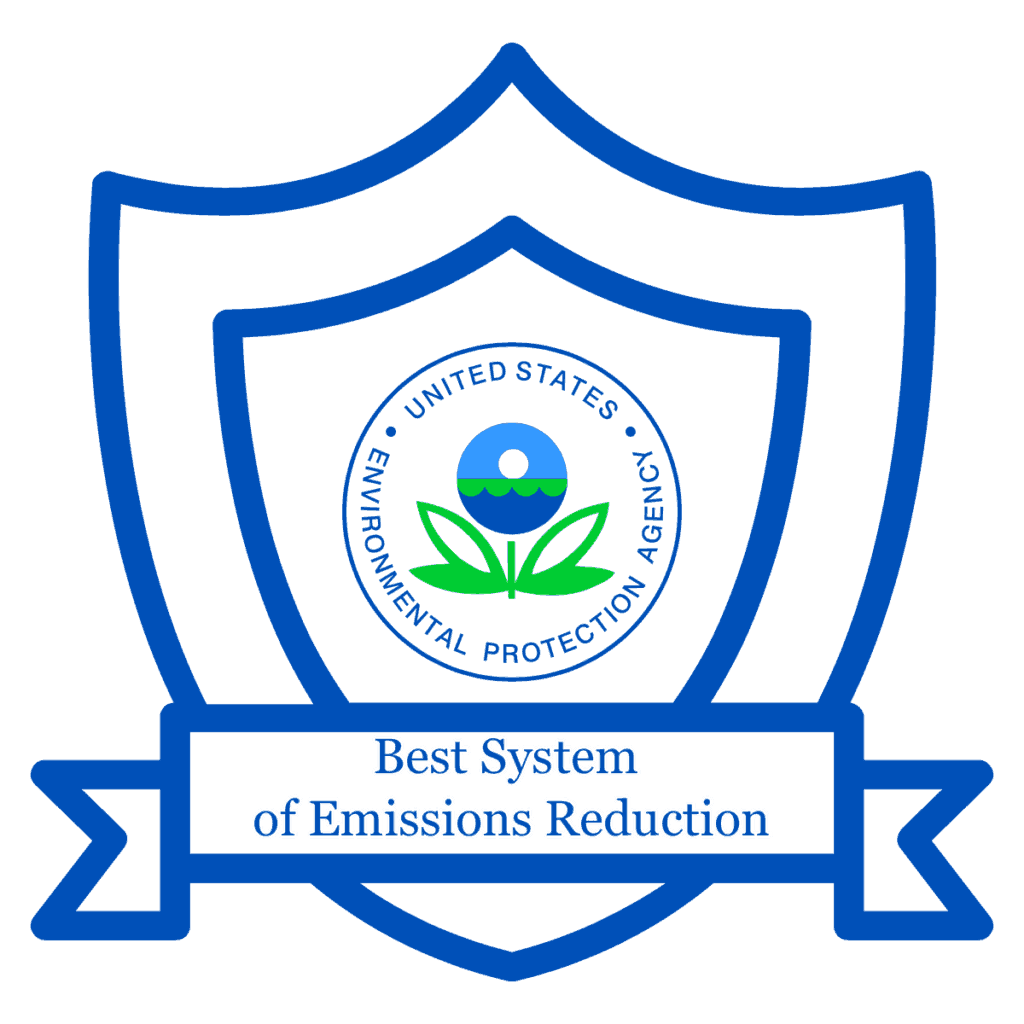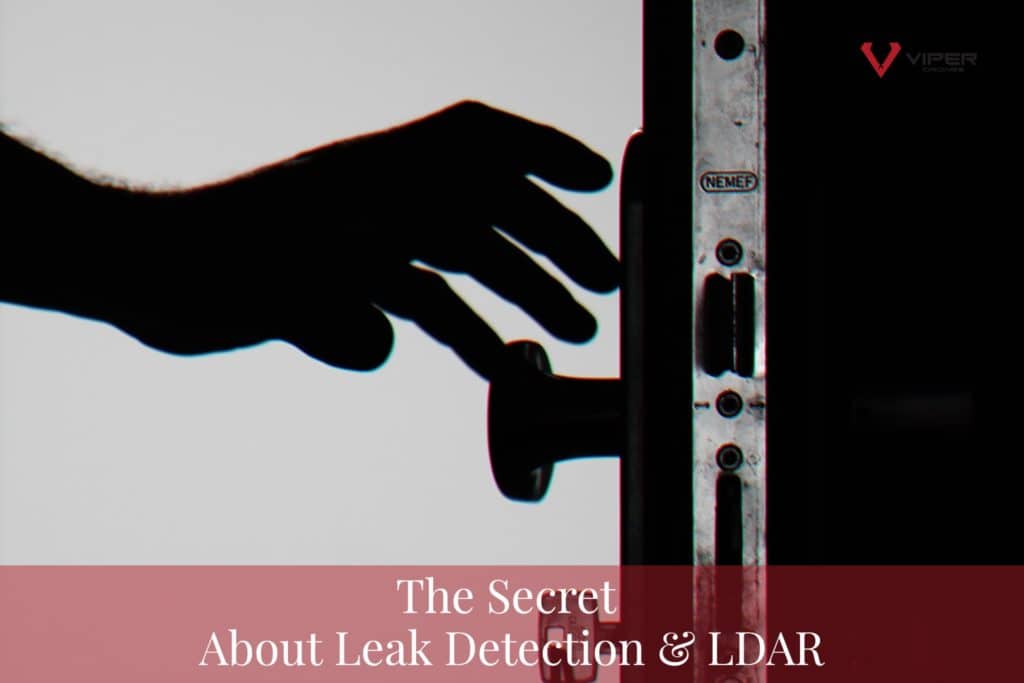
The Secret About Leak Detection & LDAR
Natural gas and oil facility owners and operators who see leak detection and repair (LDAR) requirements as opportunities for product savings are reaping the rewards in higher profits, greater worker safety, and improved testing accuracy.
Those who seize these opportunities are more likely to achieve greater competitiveness and higher public approval.
Perhaps even more importantly, investors have recently been paying more attention to plant efficiencies and are showing an increased interest in those that go above and beyond even the strictest LDAR requirements to claw back product losses through rigorous leak detection and repair.
Some surprising technologies are upending the economics of gas leak detection and making this process even more accessible and safer than the most recent options on the market.
Your bottom line could be enhanced with a fresh look at your LDAR approach!
- The Secret About Leak Detection & LDAR
- Doing a Double-Take on Leak Detection Opportunities
- From Super Leaky Lines To Super Leaky Profits
- The Challenges of Cumbersome LDAR Reporting
- Method 21’s Pitfalls and Follies
- OGI: Going Beyond Basic LDAR Is Suddenly Worth It
- The Technological Shift the Industry Needed
- Benefits for Communities and the Planet, Too
- It’s Just Good Economics
- Don’t Get Left Behind
- What Should You Do Now?
- Resources
- References
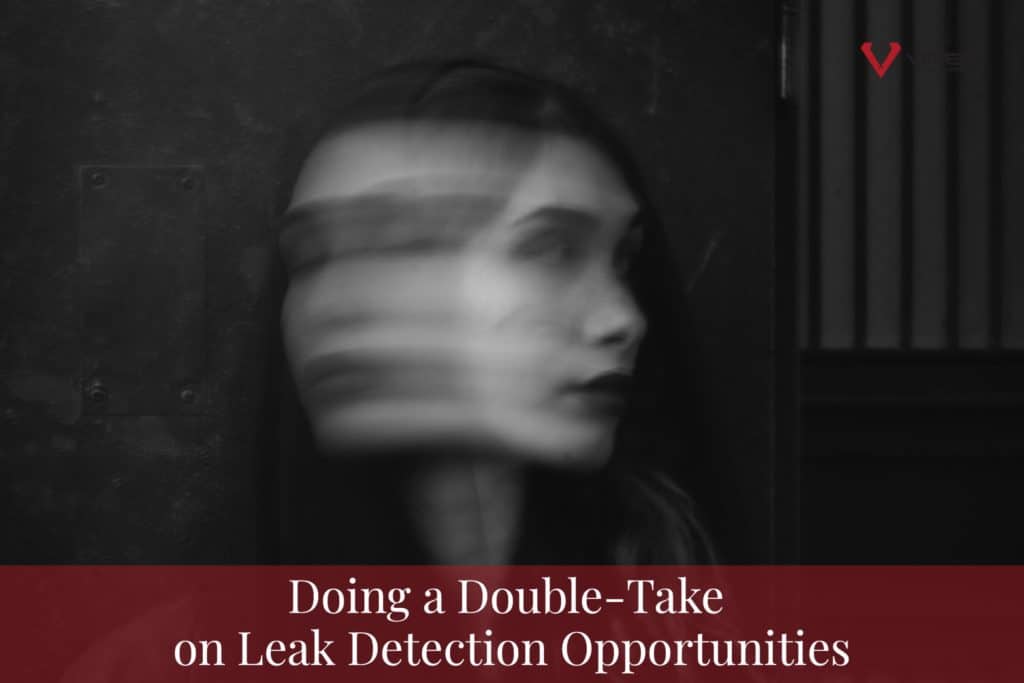
Doing a Double-Take on Leak Detection Opportunities
Do you think about government-regulated gas leak detection and repair standards as an obligation and not an opportunity? Then you need to take another look.
Let us explain.
Suppose you’re like many natural gas facility owners and operators. In that case, you’re already taking care of necessary leak detection and repair (LDAR) requirements, even though reporting can be rather onerous and complicated.
For you, doing more than that may seem unnecessary. Others of you may have yet to delve into the LDAR process. Up until this point, your facility may have been exempt.
If you fall into either of these camps, you may be missing the upsides of taking leak detection seriously.
Fugitive emissions of gases (natural gas, combustible gases, or other dangerous gases) mean profits are going up into thin air.
Rather than losing them, savvy business owners have begun to see these leaks as opportunities to pump the recovered gases straight back into their bottom lines. And today’s best leak detection technology is making it more economically feasible than ever.
From Super Leaky Lines To Super Leaky Profits
As a typical natural gas or oil executive or manager, you already have your people working hard to keep systems functioning as efficiently as possible.
You assume your facility isn’t currently leaking, and you try to ensure that no new leaks develop.
To meet government regulations, you may have a simple plan that meets the basic requirements for how to measure and fix them if they do occur.
But what if your system has leaks that you don’t know?
Worse yet, what if you are indeed doing the minimum required for leak detection and repair, but your leak detection system isn’t capturing the most dangerous fugitive emissions?
“Half of all leak-related emissions in the sector originate from approximately five percent of the sources.”
Environmental Science and Technology article
True, small leaks are often considered little problems and ignored. But super leakers – or super emitters as they are often called – can be catastrophic for employee health and bottom lines.
According to recent estimates, half of all leak-related emissions in the natural gas sector originate from approximately five percent of the sources[i] – these are the super emitters that demand our focus.
Failing to address these leaks can mean significant risks – and big losses.
Worse, It seems that most leak detection services or LDAR programs were designed around finding and fixing small leaks rather than based on the stochastics of super-emitters.
Taking a different perspective, some visionary operators are now viewing super emitters as opportunities for recapturing gases – and profits.
Rather than see super emitters (and small leaks, too) and the rules that regulate them as nuisances, these managers and owners welcome the prospect of doing more leak monitoring and repair.
With new detector technologies and innovative leak detection services making leak detection more straightforward and cheaper than ever, shrewd operators are less reluctant to invest in equipment and staff training to take advantage of these opportunities.
They understand that how leaky they let their systems become determines how leaky their site’s profits will be.

The Challenges of Cumbersome LDAR Reporting
Of course, there may be perfectly understandable reasons for wanting to avoid any extracurricular leak detection.
Let’s face it. Legacy government reporting systems can be incredibly time-consuming and cumbersome.
What’s more, LDAR can be costly – both in terms of finances and time – making anything more than the minimum unlikely for large operators and impractical for many small ones.
Consider, for instance, all of the different LDAR work practice requirements, various deadlines and obligations, and different rules for reporting and notifications.
Some regulations may require only leaked pollutants from valves, connectors, and flanges to be repaired, while other programs may include pressure relief valves and pneumatic controllers as well.
Similarly, whether the leak requires imminent repair depends on the type of pollutant and the size of the leak.
Some regulations focus on whether the gases are combustible gas, while others are specific to methane propane or carbon monoxide production. It’s a dizzying array of rules.
To date, the most commonly used LDAR process is that developed by the U.S. Environmental Protection Agency (EPA), called Method 21 (sometimes referred to as “M21”).
“Profit-conscious companies would voluntarily choose to do their leak surveys to avoid product losses. But that was the exception.”
EPA Official
However, until recently, Method 21 wasn’t required for many existing facilities.
In some cases, profit-conscious companies would voluntarily do their leak surveys to avoid product losses. But that was the exception, and not the rule, primarily because of the administrative burden of going beyond Method 21.
Adding to the complexity of reporting requirements is EPA’s New Source Performance Standards (NSPS) Subpart OOOOa regulation, which includes much more comprehensive leak coverage for virtually any source of methane or other VOCs from wellheads to compression sites.
While these “fugitive emissions component” rules apply first to new facilities and modified facilities, inspectors are starting to test new areas for leaks.
To further complicate matters, there are often state-specific reporting requirements that overlap with the federal NSPS and the Greenhouse Gas (GHG) Mandatory Reporting Rule (MRR), as well as permit requirements specific to individual facilities.
What’s more, new state LDAR requirements are also coming online, which require more frequent monitoring and greater complexity of data collected.
Some may require leak repair within 15 days, while others within 30. One state may require surveys to be done quarterly, while others semi-annually.
All of this adds up to a considerable time commitment to get the reporting done right. More than likely, this requires an operator to have at least one person – if not multiple people – with a comprehensive understanding of all the regulatory requirements to avoid costly fines due to unaddressed leaks.
“All of this adds up to a considerable time committment
LDAR Executive
LDAR Executive.”
The costs related to the time and effort to meet these reporting requirements are high, which means for many operators, doing any more than the minimum is unlikely.
No wonder any talk of regulations leads to the alarm going off in every board room.

Method 21’s Pitfalls and Follies
No doubt, the burden of Method 21’s reporting and administration has been a challenge for many operators.
But this system has other substantial operational drawbacks that make it less exact and useful than it could be.
Most importantly, detecting leaks using Method 21 is incredibly time-consuming.
Perhaps one of the reasons it’s referred to as the “sniffing” method is that it often feels as though you have to smell each connection to find possible leaks.
Technicians don’t actually use their noses. But, they do have to pass a handheld aspirated wand fitted with a hydrocarbon flame ionization detector (FID) or a handheld photoionization detector (PID) over each individual component. This technique makes the time required to execute this approach significant.
You can imagine that in extensive facilities or over long pipelines with many thousands of connections, missing a leak may not be all that difficult.
The fact of the matter is that leaks can happen throughout the value chain – from production to gathering and boosting, processing to transmission and storage.
A leak source can be at nearly any point along these systems – whether from a storage tank that isn’t properly venting, a stuck pneumatic valve, or a compressor station that’s malfunctioning.
In every instance, the surveyor must come into relatively close contact with a potential source to “sniff” it with the handheld device – a process that is prone to error and also risky for workers.
Methane, propane, or any other combustible gas, for that matter, after all, can be deadly.
Rounding out this list of Method 21 problems is the fact that there are known accuracy issues in the leak calculation methods.
With all of this in mind, LDAR experts have been in search of ways to improve upon Method 21 by developing technology and processes that are much more efficient, safe, and accurate.
What they want are solutions for meeting regulations – and saving money. A system using new technologies, equipment, and processes that help workers solve difficult problems with much greater ease while recouping lost profits is what’s needed.
Decreasing community exposure to VOCs and reducing greenhouse gas emissions would be great, too.
OGI: Going Beyond Basic LDAR Is Suddenly Worth It
While LDAR has been a good work practice, gas operators no longer have to depend on the old Method 21 approach to find and repair fugitive emissions.
Enter optical gas imaging.
As it is known, OGI is one of the newest technological advancements in the industry. It has been a real game-changer for surveyors because of its efficiency, scalability, accuracy, and added worker safety throughout the process.
It is among the most effective gas sensors.
As such, it has been recognized by the EPA as an Alternative Work Practice (AWP) for LDAR.
How does it work?
The OGI camera is a natural gas detector that visualizes the gas stream, displaying a leak (which would generally not be visible to the naked eye) as if it were smoke on the camera’s view screen.
LDAR operators use OGI cameras without shutting down a system and, most importantly, visualize entire areas – rather than individual components.
Using OGI solutions vastly speeds the survey process, keeps workers away from dangerous areas, and improves LDAR results.
Plus, OGI will not only detect methane but can also help find leaks of hexafluoride, sulfur, and hundreds of other types of industrial gases.
For those who recognize the opportunities OGI offers, the bottom-line benefits have been significant.
Let’s consider each one of these benefits of OGI compared to Method 21.

Greater Cost Efficiency and Scalability
On the one hand, with Method 21, a surveyor must pass a handheld device painstakingly over every possible fugitive emissions source.
A surveyor must wave the wand over hundreds (or more) connections one at a time before finding a leak – or none at all!
It’s not surprising that with this solution, the number of connections tested per unit of time can be very low and result in redundancies.
Not only does this amount to substantial labor costs per facility, but because the work is extremely tedious and repetitive, staff turnover can be quite high, resulting in higher human resources costs related to the frequent onboarding of new staff.
OGI, on the other hand, makes it possible for one surveyor to cover much ground, screening several hundred components simultaneously.
In fact, of the five elements of an LDAR program – identifying components, leak definition, monitoring components, repairing components, and record-keeping – OGI simplifies the first three, which happen to be the most tedious of the entire system.
Consequently, the ratio of time to connections tested is much better and, therefore, more cost-effective, vastly increasing the scalability of a surveyor’s efforts.
The work may also be much less monotonous, resulting in higher staff retention rates and smaller labor budgets.
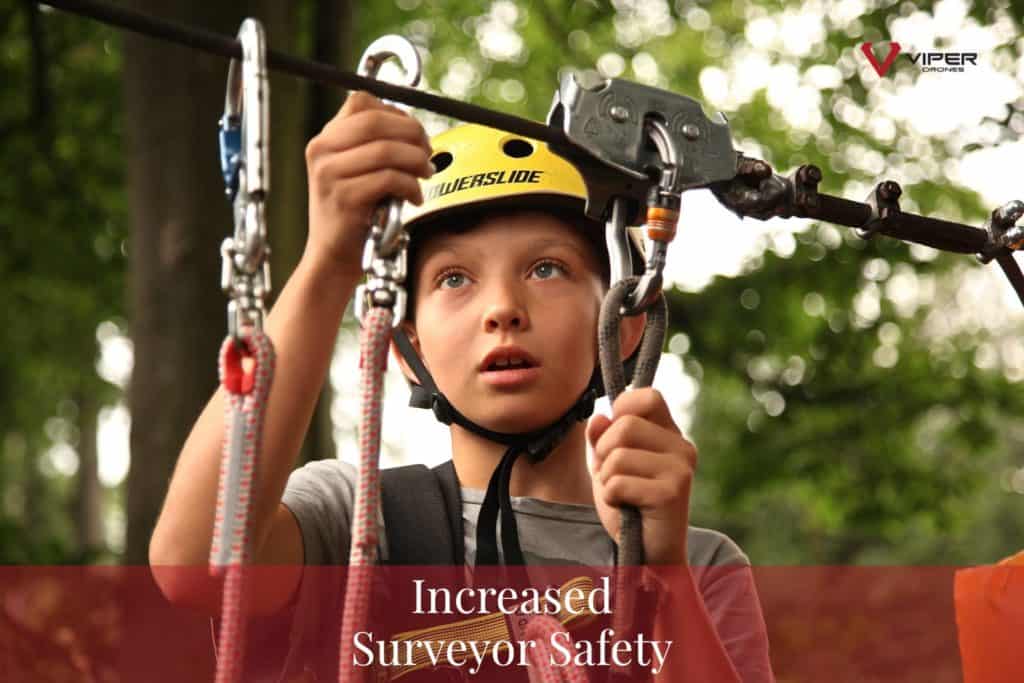
Increased Surveyor Safety
Speaking of employee retention, consider the benefits OGI has for improving worker safety.
Since Method 21 requires the use of handheld devices for inspecting individual components, surveyors have to get up close and personal with each one. Being up close increases the likelihood of exposure to dangerous gas leaks.
Scanning with optical imaging allows for the testing of components from afar, making it much safer.
Elaborate scaffolding, challenging lift requirements, and otherwise unsafe testing environments (including “difficult to monitor” (DTM) and “unsafe to monitor” (UTM) situations) can be virtually eliminated to improve overall worker safety.
What’s more, it can be used even on those components that would have previously been inaccessible with traditional contact measurement equipment.
Plus, the amount of monitoring time is significantly reduced, too, which further lowers technician exposure and improves their safety.
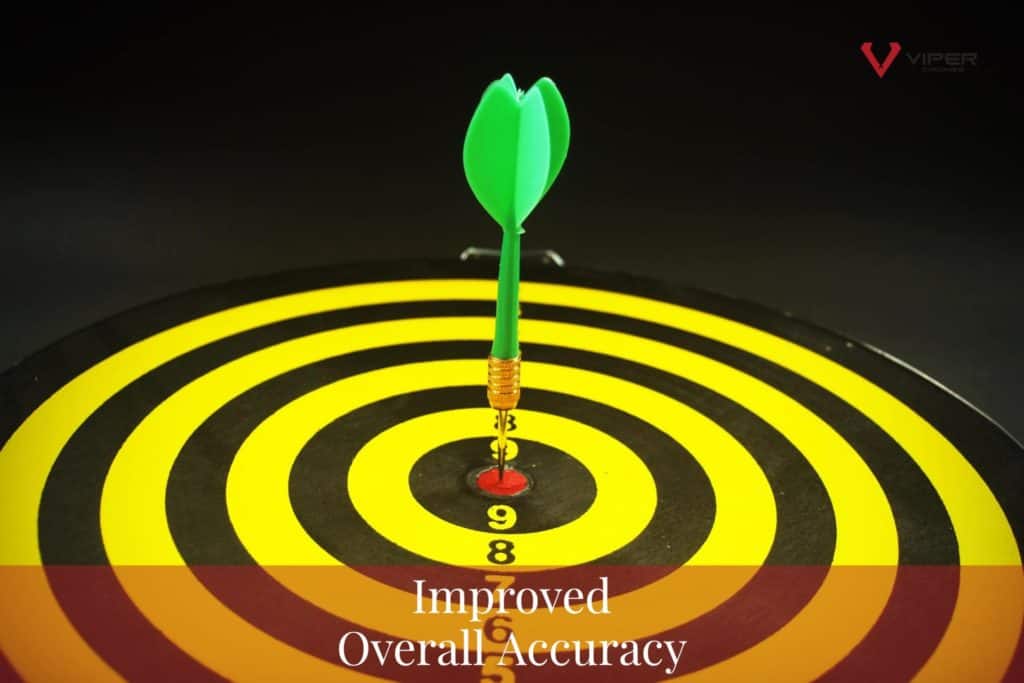
Improved Overall Accuracy
Increases in accuracy are also possible with OGI.
In the conventional M21 process, surveyors must scan numerous components individually to get the screening value (SV) in ppmv, then, using correlations, estimate the emissions rates (ER).
But doing these calculations can be complicated.
There is potential for error in both phases of the process, resulting in predicted leak rates that may be significantly over-or underestimated.
By contrast, OGI requires no ER calculations because the cameras visualize whether the leak is large or small.
Plus, surveyors can identify which component is the problem with greater accuracy, making “ghost leaks” a thing of the past.
In areas where there may be many individual leaks, OGI simplifies source identification, regardless of whether they’re from valves, connections, pumps, open-ended lines, pressure relief valves, or sampling connections.
Imagine the benefits of this kind of system for more extensive facilities where regular infrastructure changes are frequent.
Consider also how this would simplify the process of operators getting up to speed in recently-acquired facilities where the components are unfamiliar.
Additionally, by more accurately pinpointing actual leaks, operators have fewer components added to their facility’s “Delay of Repair List.”
Why?
When suspected leak locations are in areas where it is technically infeasible to repair without shutting down the entire system, they are added to this list for future repair.
If an easy-to-repair leak is erroneously added to this list, the component will continue to leak, which can result in costly product losses – sometimes for weeks or months.
OGI, on the other hand, ensures components are only added to the “Delay of Repair List” when truly required, allowing for fast repairs whenever feasible.
With all of these accuracy benefits, OGI not only minimizes the need for multiple costly inspections but also speeds up the repair process, thereby lowering costs throughout.
More Frequent Testing For Earlier Leak Detection
Some argue that OGI can miss smaller leaks – and this may only be true with OGI cameras that lack the newer add-on equipment that increases precision.
Yet, even when more minor leaks are overlooked, OGI ensures that super emitters are caught much sooner – and therefore repaired before they cause colossal product losses.
Consider this: According to one EPA case study comparing Method 21 and alternative methods, OGI was able to identify a medium-sized leak six months earlier than Method 21.
That’s a lot of product saved.[ii]
“Comparing Method 21 and alternative methods, OGI was able to identify a medium-sized leak six months earlier than Method 21.“
U.S. EPA Case Study
How is it that OGI catches large leaks so much sooner than Method 21?
Because it’s cost-effective enough to conduct OGI surveys more frequently than Method 21.
Given how much faster and cost-effective OGI inspections are compared to Method 21 inspections, an operator may optionally choose to have their entire facilities inspected semi-annually, semi-quarterly, or even more frequently.
Doing so ensures new leaks are detected and repaired much sooner, dramatically dropping annual emissions rates and any related penalties for emissions overages.
It’s clear that OGI-based LDAR programs are far more efficient and have the potential to provide much more significant emissions reductions than conventional Method 21-based LDAR solutions.
OGI technologies are only getting better over time, offering even more system improvements.
It’s also easy to see the operational benefits of using OGI rather than Method 21, including improved worker safety, greater accuracy, and options for more frequent testing.
These advantages are why many large facility operators – and even some smart, smaller operators – have chosen to go beyond the minimum LDAR requirements.
They recognize the gains throughout the value chain and have used OGI-based LDAR to improve their bottom lines.
Yet, even these benefits have not enticed the vast majority of operators to make the switch to this AWP.
Perhaps they are hesitant because they are skeptical about how much profit they can recoup.
The fact that some states (including both Texas and California) have maintained M21-based LDAR as the standard of practice rather than accepting AWPs has further slowed the adoption of OGI as a mainstream technique.
What is needed is a more straightforward solution that befits the size of the challenge – a solution that leapfrogs reporting, operational, and financial roadblocks to make OGI the clear choice for facilities large and small.
Knowing the practical and budgetary issues faced by the people working hard at these facilities, industry leaders have been trialing new ways to deploy OGI testing methods.
One solution is sure to be the clear winner in the months and years to come: OGI cameras deployed using drone technology.
As will soon be obvious, this innovation has the potential to mainstream OGI, making frequent, accurate, safer monitoring and repair feasible for even the smallest operators.
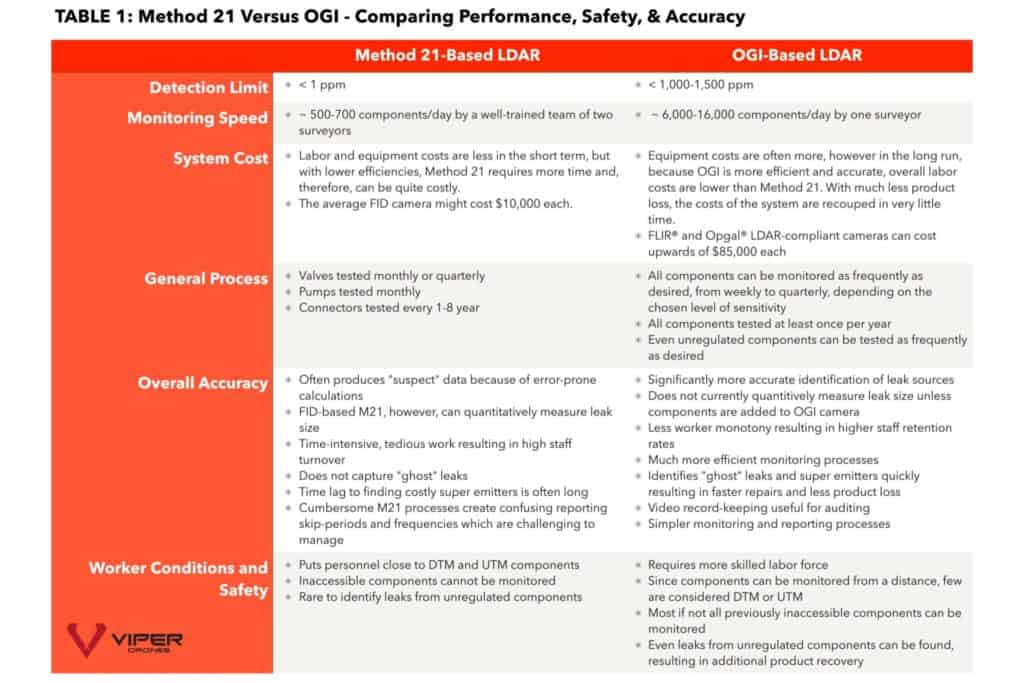
Table 1: Method 21 versus OGI – Comparing performance, safety, and accuracy
| Method 21-Based LDAR | OGI-Based LDAR | |
| Detection Limit | < 1 ppm | < 1,000-1,500 ppm |
| Monitoring Speed | ~ 500-700 components/day by a well-trained team of two surveyors | ~ 6,000-16,000 components/day by one surveyor |
| System Cost | Labor and equipment costs are less in the short term, but with lower efficiencies, Method 21 requires more time and, therefore, can be quite costly. The average FID camera might cost $10,000 each. | All components can be monitored as frequently as desired, from weekly to quarterly, depending on the chosen level of sensitivity All components are tested at least once per year Even unregulated components can be tested as frequently as desired |
| General Process | Valves tested monthly or quarterly Pumps tested monthly Connectors tested every 1-8 year | Valves tested monthly or quarterly Pumps tested monthly Connectors are tested every 1-8 year |
| Overall Accuracy | Valves tested monthly or quarterly Pumps tested monthly Connectors are tested every 1-8 year | Often produces “suspect” data because of error-prone calculations FID-based M21, however, can quantitatively measure leak rate and size Time-intensive, tedious work resulting in high staff turnover Does not capture “ghost” leaks The time lag to finding costly super emitters is often long Cumbersome M21 processes create confusing reporting skip periods and frequencies, which are challenging to manage |
| Worker Conditions and Safety | Often produces “suspect” data because of error-prone calculations FID-based M21, however, can quantitatively measure leak rate and size Time-intensive, tedious work resulting in high staff turnover Does not capture “ghost” leaks The time lag to finding costly super emitters is often long Cumbersome M21 processes create confusing reporting skip periods and frequencies, which are challenging to manage | Requires more skilled labor force Since components can be monitored from a distance, few are considered DTM or UTM Most, if not all, previously inaccessible components can be monitored Even leaks from unregulated components can be found, resulting in additional product recovery |

The Technological Shift the Industry Needed
Mounting OGI cameras to unmanned aerial vehicles (UAVs) may have the most potential to make OGI the LDAR system of choice.
Essentially, this approach allows surveyors to fly an OGI-equipped drone overhead of and throughout a facility to get a bird’ s-eye view of every possible leak, whether it’s a one-time stuck valve or a long-term problem like a leaky flange.
Truck-based surveys are using the same technology as they work on wells and inspect long stretches of pipelines.
There are numerous ways OGI by drone is complementary to even the best OGI by foot solutions.
First, drones offer an increased vertical resolution that would otherwise be impossible or too expensive to obtain due to the need for specialized rental equipment.
Having a higher vertical resolution ensures you have a more comprehensive view of how your entire facility is operating.
Don’t forget surveyor safety – drones improve on this, too.
Just as conventional OGI shortens the list of DTM and UTM zones, drone-based OGI makes this list shorter yet – and that means less danger for workers than even the best first-generation OGI solution.
Yet the real attraction to drone-based OGI monitoring – the thing that’ll get nearly every facility onboard – is how often you can do screenings.
Because drone-based monitoring is so fast, it offers the option to have far more frequent tests – even weekly, if required.
Remember that super emitters can vary in their leak rates over time. If screenings detect them within a few days or weeks of starting, what would have previously meant months-long or years-long product losses are cut down dramatically.
Consider these stats from the U.S. EPA.
You can expect up to a 70% reduction in emissions with quarterly inspections and a 10,000 ppmv leak definition.
By contrast, if you increased the frequency of inspections to monthly with a 10,000 ppmv leak definition, the EPA estimates this could result in an emissions reduction of up to 88%.[iii]
“60% reduction in emissions with quarterly inspections and 10,000 ppm leak definition.
U.S. EPA
90% or greater reduction in emissions with monthly inspections and 500 ppm leak definition.“
True, running OGI drones does require a skilled pilot to manage the equipment in a safe manner, which could raise operational costs slightly at first. But even after considering the initial equipment investment and operator budget lines, researchers have estimated that these costs are recouped in short order by making it far easier to capture large leaks.
So while OGI on foot is great, methane-detecting drones are much better because they’re making it easier and cheaper than ever for even smaller companies to use sophisticated leak-plugging solutions.
We designed, built, and tested our own version of the Drone-enabled OGI inspection system. We call it Viper Vantage.
When we built it, Viper Vantage’s drone-based OGI Solution led the industry to a new height. It combined the gas leak detection advantages of OGI with a professional flight platform chosen explicitly for use on LDAR missions.
We used it to rigorously test the thesis of how OGI Drones can bring value to the LDAR problem.
Not only is it safe, reliable, and simple to integrate into your testing procedures, it is equipped with high-end FLIR thermal sensors that can be calibrated precisely to look for specific temperatures, palettes, and emissions profiles.
With this kind of equipment, all of a sudden, it becomes possible for operators of all sizes to purchase and manage their own OGI drones so that it’s even realistic to conduct weekly inspections.
In other words, whether an operator needs more frequent testing, requires higher resolution, or is just looking for a cost-effective way to achieve greater efficiencies, drone-deployed OGI solutions like Viper Vantage will likely be the preferred solution.
Drone-deployed OGI is turning leaked gases into profits.

Benefits for Communities and the Planet, Too
Environmental and community groups are starting to see the potential in drone-based OGI technologies, too.
There are good reasons for environmental groups like the Environmental Defense Fund (EDF) to have big concerns about leaks from oil and natural gas production and conveyance.
These facilities are a big part of U.S. emissions as a whole. In fact, in 2012, methane gas made up 9% of all U.S. greenhouse gas emissions, 33% of which came from the oil and gas industry.
Some estimates suggest that leaks from existing oil and gas equipment in the U.S. account for 90% of methane emissions.[iv]
We also know that compared to carbon dioxide, methane is at least 21 times better at trapping heat in our atmosphere.
In other words, the relative impact of leaks coming from existing sites shouldn’t be ignored.
Industrial gas leaks are also bad for human health, raising concerns from community groups.
Gas leaks from industrial production accounted for the emission of more than 70,000 tons of VOCs and more than 9,000 tons of hazardous air pollutants (HAP), both of which harm human health.
One chemical plant or oil refinery alone can emit 600-700 tons of VOCs yearly because of leaks.[v]
“Selected mobile OGI technologies correctly detected over 90% of test scenarios and could assign leak to the specific equipment.”
Stanford/EDF Mobile Monitoring Challenge
With all of this in mind, Stanford University and the EDF did a joint study of mobile OGI technologies (vehicle-, plane-, and drone-based).
They found “6 of the 10 technologies correctly detecting over 90% of test scenarios (true positive plus true negative rate).”
Additionally, “All technologies demonstrated pad-level localization of leaks, while 6 of the 10 technologies could assign a leak to the specific piece of equipment in at least 50% of test scenarios.”
They point out that more testing is required to achieve improvements in quantification algorithms and to reduce false positives.
However, the lessons learned from real-world implementation by companies like Viper Drones are proving the value already.
Companies like this are on the cutting edge of innovation and are making improvements and refinements every quarter that make moving beyond traditional solutions a no-brainer.
As such, there is strong optimism that mobile detector technologies like drone-based OGI represent a significant step forward in reducing super emitters.
Reputation for the oil and gas industry is essential for buy-in from the public.
There have been a few major leaks in major gas lines, stories of nearby gas line leaks, or instances where a gas company, through neglect, is faced with a dangerous natural gas leak in their community.
These instances have raised public awareness about natural gas leak detection.
Addressing environmental and community health issues should, therefore, be the concern of any shrewd operator.
But it’s not just the eco-minded and local residents who care about how a system operates.
More and more energy investors are also looking into the environmental health of gas facilities.
Let us explain why.

It’s Just Good Economics
The reality is that alarm bells have been going off in investment advisor offices around the world.
Investor opinions on a given energy company matter because, as we suggested at the beginning, leaky lines mean leaky profits.
Take Pennsylvania as an example. In that state, methane leaks from gas production represent $70 million in wasted natural gas every year, according to one EDF scientist.
That’s the equivalent emissions of nine coal-fired power plants every year. Scrupulous investors might turn away from a company that chooses to waste those kinds of profits.
It’s with this in mind that the CDP’s The Carbon Majors Database report was published in 2017.
This report is essentially a list of the biggest energy producers in the country ranked by the efficiency of their plants and how transparent they are in reporting product-related emissions.
What the report found was that relatively few companies are responsible for most of the fugitive emissions.
These are the kinds of stats that have investors rethinking current investments in these firms.
Yet, even smaller companies should sit up and take notice.
After all, knowing that natural gas leaks equal lost profits, investors may not want to work with facilities that forgo monitoring because of LDAR costs and time commitments.
As fines for leaks and risks of wasted profits increase, investors will prefer those operations that have a solid LDAR plan in place.
Fossil fuel companies that go above and beyond the basics have the best chance of attracting – and holding on to – outside investments.
In other words, frequent, thorough, accurate, and comprehensive leak surveys make good financial sense.

Don’t Get Left Behind
Entire countries are starting to recognize the potential of advanced OGI tech to achieve more significant reductions in fugitive emissions.
Canada, for example, recently passed laws that take effect on January 2020 that favor new technologies in leak management, including UAV systems.
With many new startup companies vying to provide leak detection services in that country, oil, and natural gas companies in Canada can expect increased system sophistication and, through competition, lower overall service costs.
No doubt, even U.S. firms will jump across the border to see what share of this growing market they can capture.
Here in the U.S., it’s true that the current administration may drop more stringent LDAR requirements.
However, those companies that see the trends and recognize the opportunities to stop leaks aren’t going to relax their facility’s standards.
With roadblocks disappearing and the financial stars aligning, there’s little reason for avoiding leak detection and repair these days.
The solutions are becoming ever more apparent, and those who ignore them may do so at their peril.
After all, they know that natural gas leaks mean lost profits and a lost reputation.
Companies that ignore the trends may just get left behind – by investors, the U.S. public, and the world.

What Should You Do Now?
Talk to your compliance team. Find out what your approach has been to LDAR.
If you are unregulated and don’t have a leak detection program, you should consider adding leak detection services.
Contact us. We will evaluate your assets to determine how much a modern LDAR program could contribute to your bottom line.
If you have an in-house leak detection team and they are not using drone-enabled solutions, contact us. We will show your team how to cost-effectively leverage the new methods to flip your economics of LDAR.
If you have outsourced your leak detection, and your provider is not using drone-enabled OGI, contact us. We will show your outsource partner how to incorporate the new methods to flip your economics of LDAR.
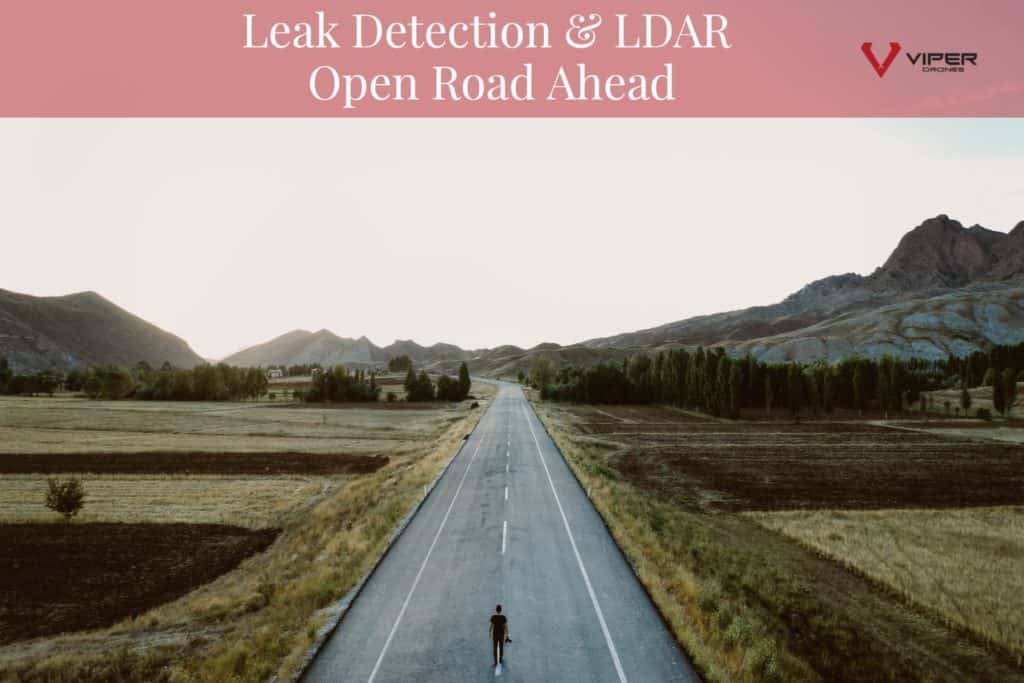
Resources
CDP’s The Carbon Majors 2017 Database report
Methane Leaks from Natural Gas Systems Follow Extreme Distributions
Stanford/EDF Mobile Monitoring Challenge
References
[i] https://pubs.acs.org/doi/10.1021/acs.est.6b04303
[ii] https://www.epa.gov/sites/production/files/2016-04/documents/20trefiak.pdf
[iii] https://www.epa.gov/sites/production/files/2014-02/documents/ldarguide.pdf
[iv] https://www.vox.com/2015/1/14/7545377/obama-methane-climate
[v] https://www.epa.gov/sites/production/files/2014-02/documents/ldarguide.pdf
[v1] The Viper Vantage gas leak detection system includes a FLIR G300a OGI camera which is a sensor that is EPA 0000a certified methane gas leak detection solution and detects the following dangerous and combustible gases: Benzene, ethanol, ethylbenzene, heptane, hexane, isoprene, methanol, methyl ethyl ketone, MIBK, octane, pentane, 1-pentene, toluene, m-xylene, ethane, butane, methane, propane, ethylene, propylene
Note on detector technology innovation:
Not every sensor is a good sensor, and not every detector is a good detector. Indeed, the EPA certification of FID as a model for gas leak detection and repair services has, in some ways, limited innovation and reduced exploration of new detector technology and leak detection services or solutions. The good news is that the climate change alarm has caused many to revisit the old assumptions.
We are seeing a recent surge in semiconductor sensors innovation around developing small and cost-effective combustible gas leak detectors, sniffers that can smell gas, and so on. some of these solutions have contributed to advances in unrelated areas, such as carbon monoxide detectors, which dramatically enhance consumer needs for carbon monoxide detection, a common killer in the home. As the industry continues to focus on natural gases, combustible gases, and innovative leak detection services, we would expect to see many additional contributions to consumer safety broadly.
You should read this…
-
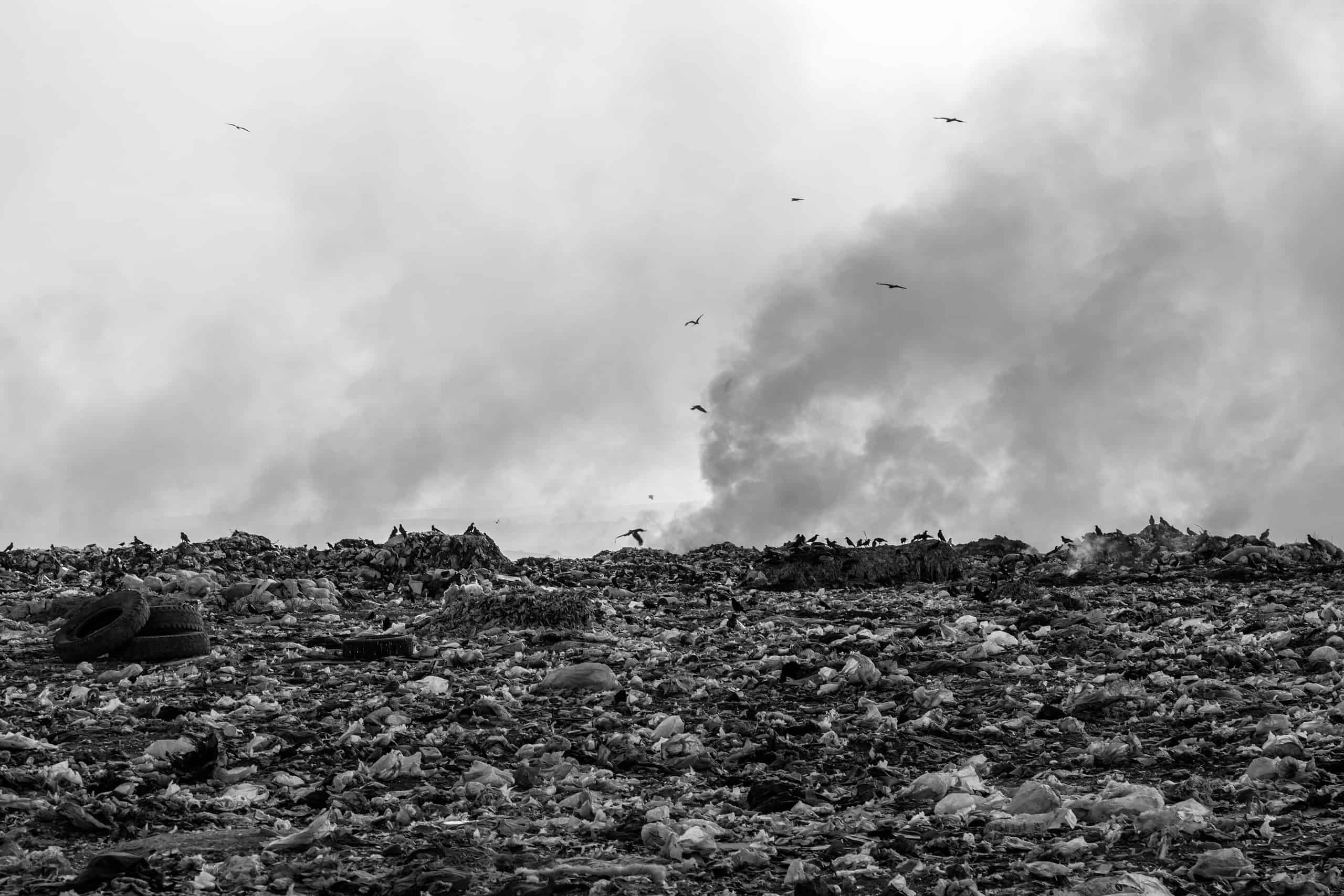
Methane Detection Enters New Era with EPA-Approved Drone Method
Discover how drones equipped with methane detectors are transforming landfill inspections, improving efficiency and safety while reducing emissions.
-

Why Gas Leak Detection (LDAR) must continue to be a priority
For a while it seemed LDAR was no longer critical. Why are we so confident that LDAR remains critical and a priority for the energy industry and the world?

Tom McKeefery
Partner, Managing Director
Transformation, Technology, Supply Chains, and Operations. 5+ years in Drone Technology Businesses.

Brad Nichols
Partner, CTO
30-plus years focused on mission-critical technology and operations. 5+ Years experience with Drone Solutions.

Leon Shivamber
Partner, Chair
Advisor, Entrepreneur, Strategist, & Transformation Agent. Over a decade of experience with Drone Technology and Solutions.

